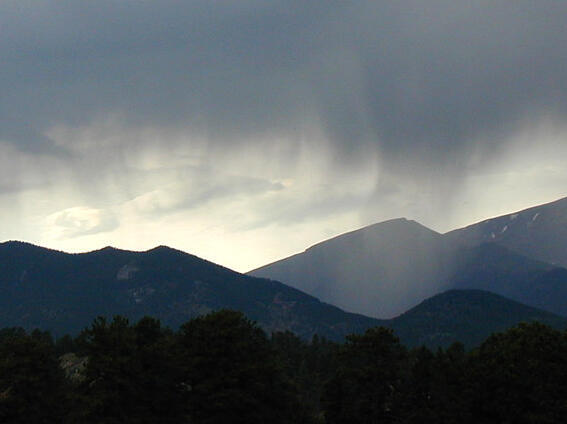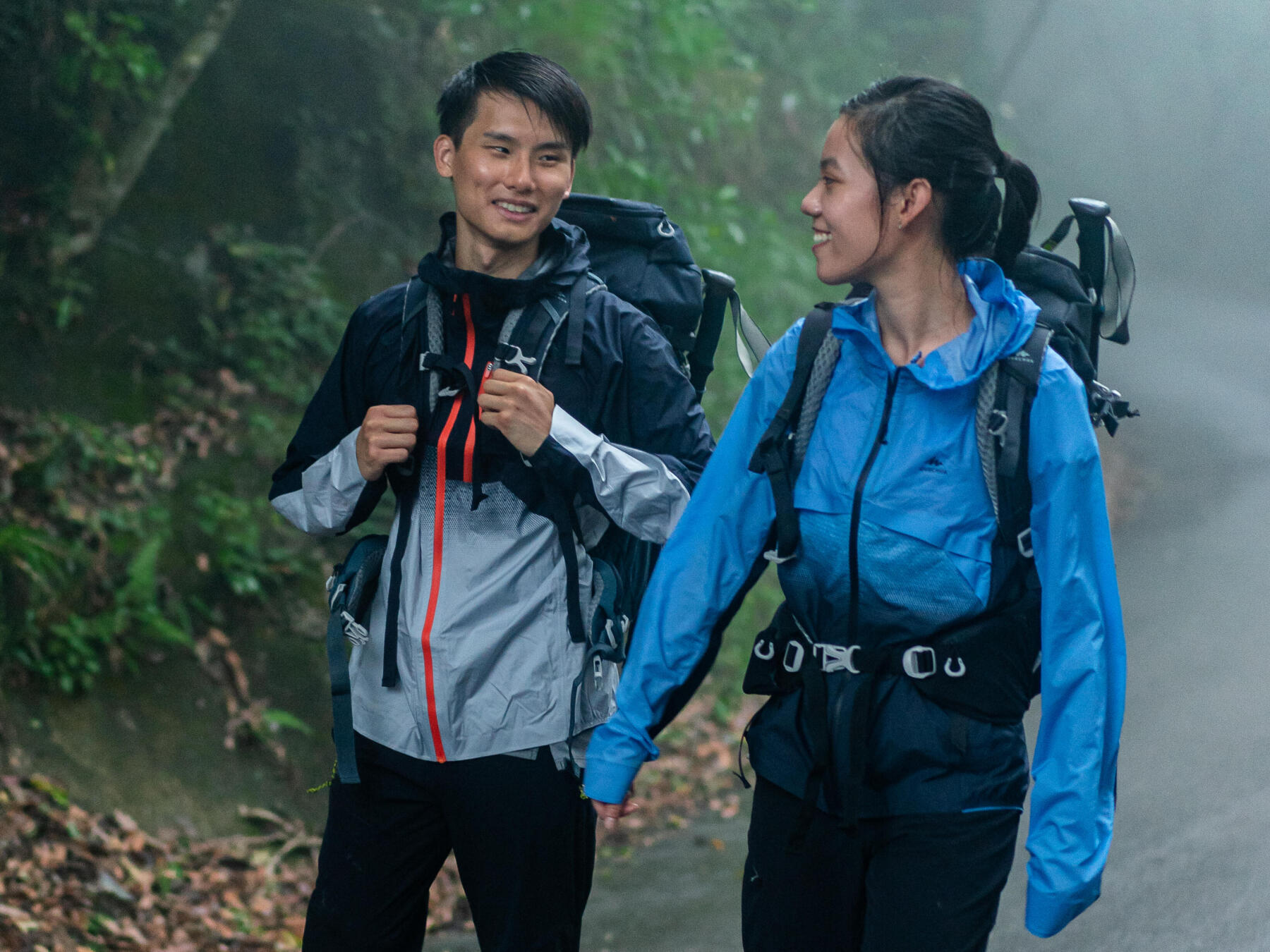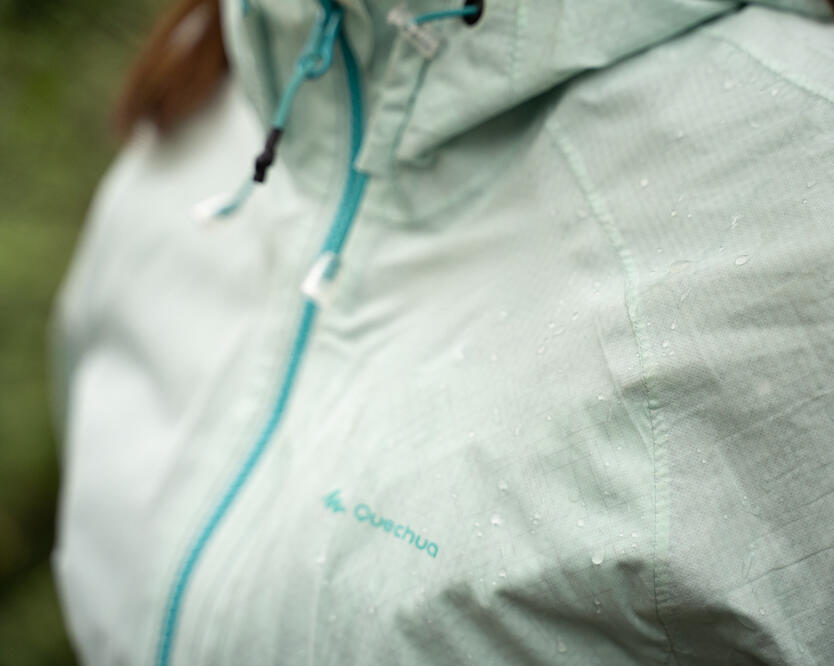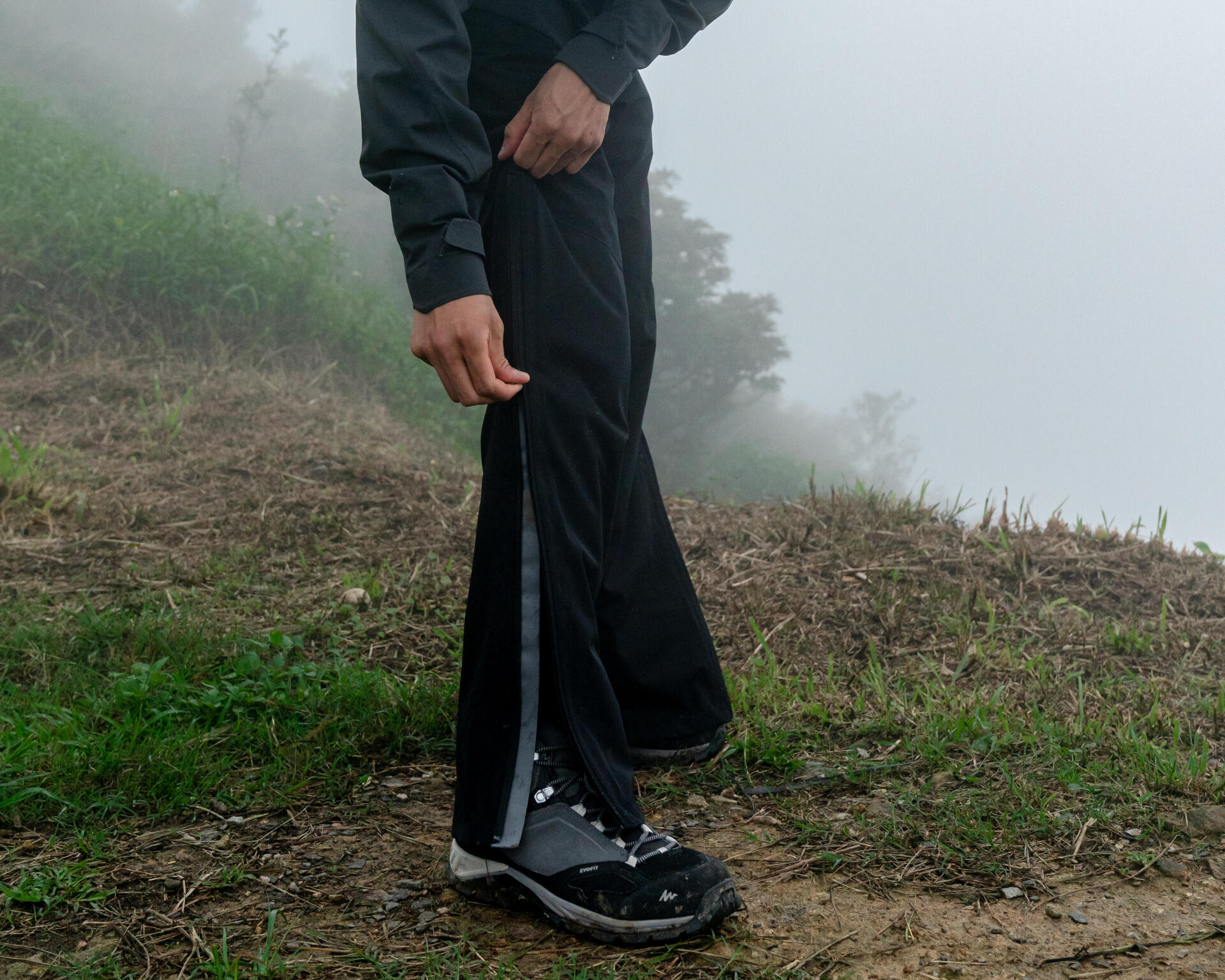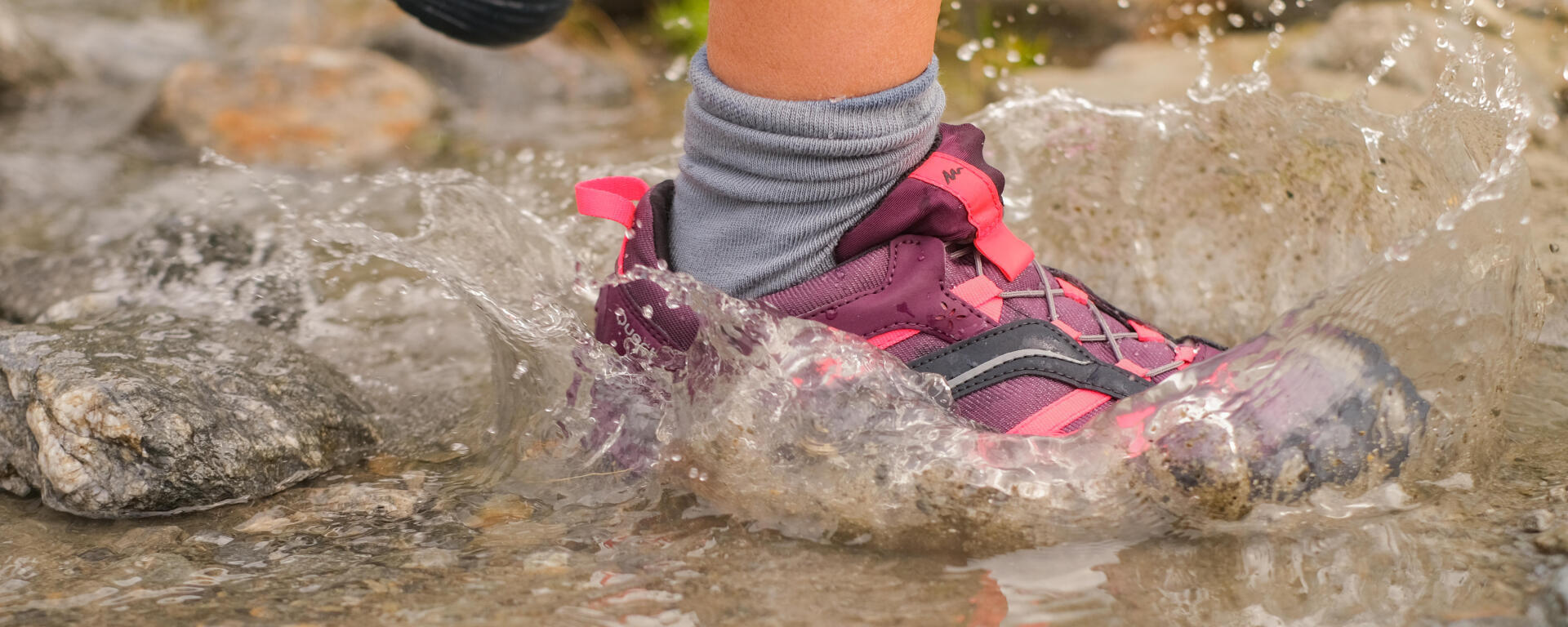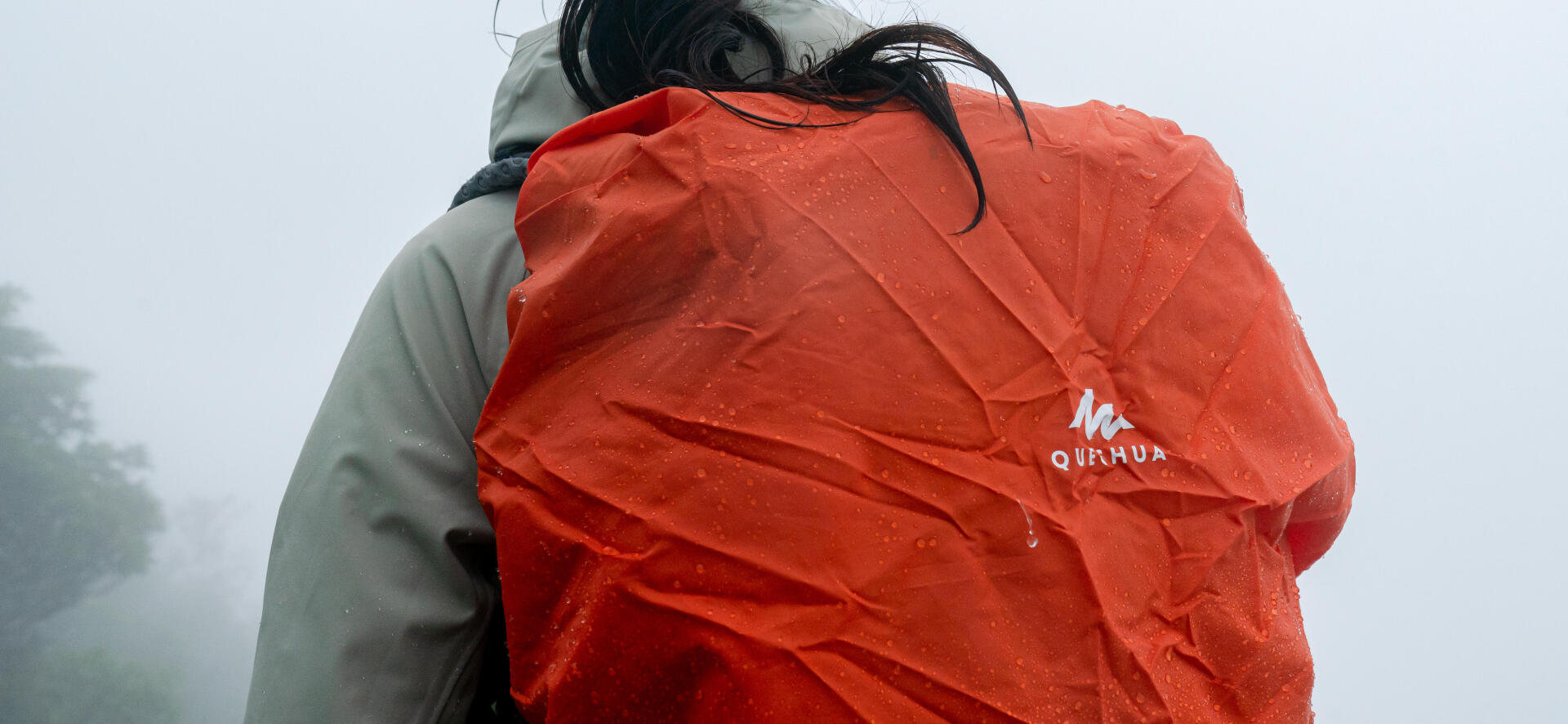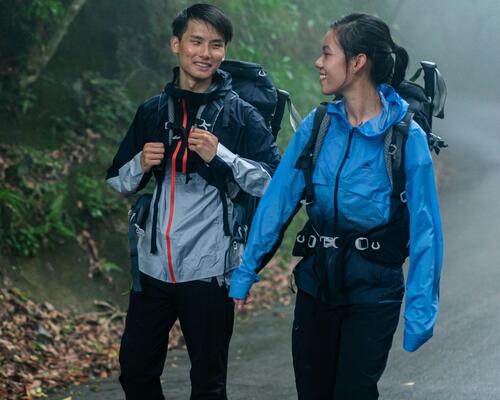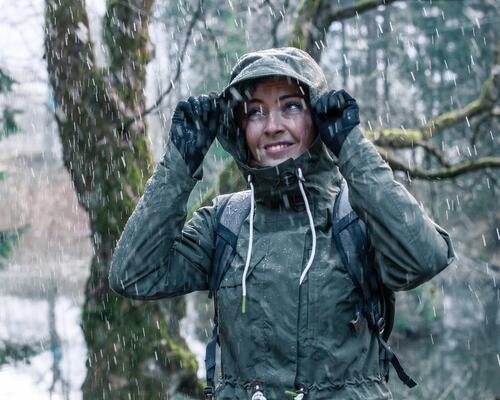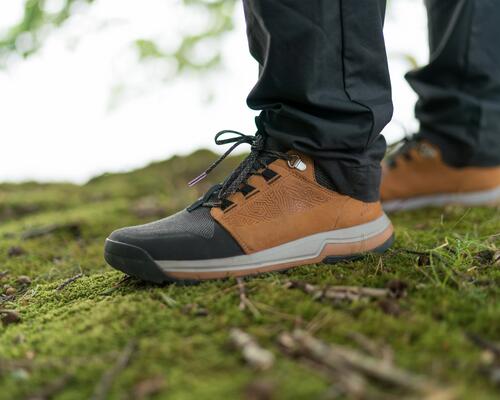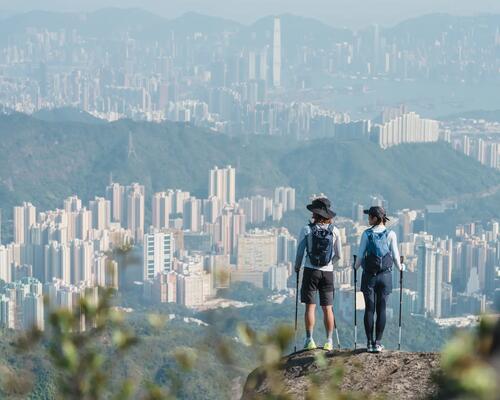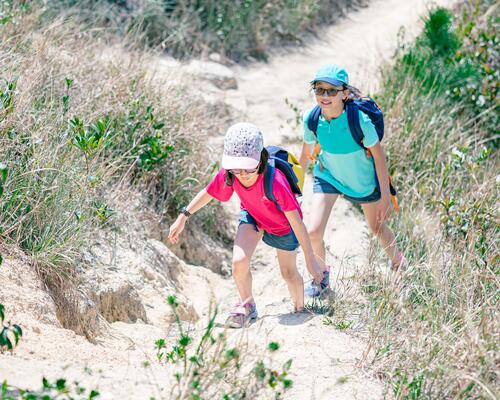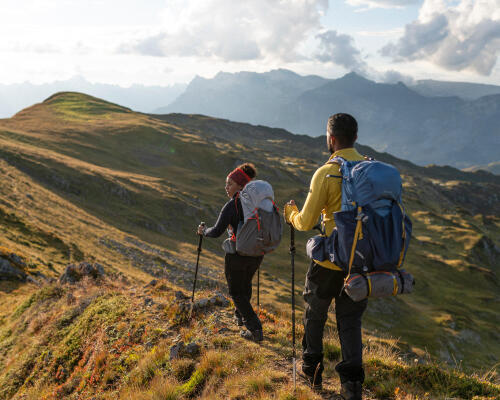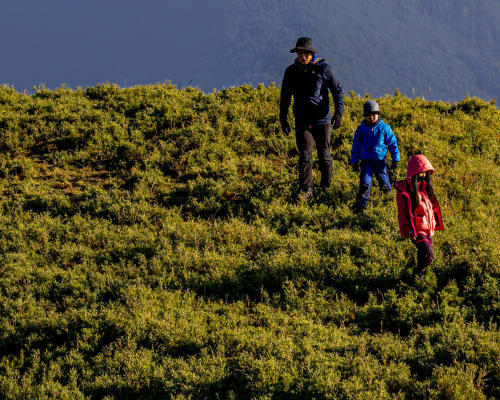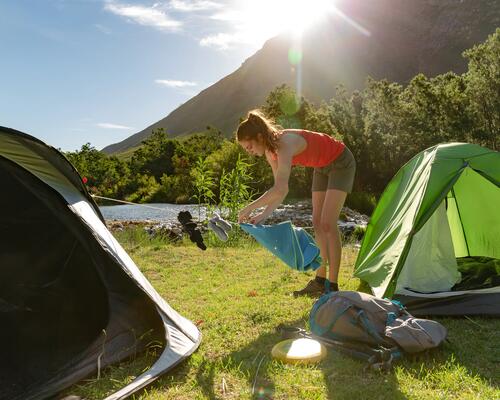3.2 Waterproof hiking shoes
The waterproof treatment for shoes is similar to apparel. It includes a water repellent outer coating, plus a middle waterproof layer. It is a must-have item if you go hiking in the rain.
Waterproof hiking shoes are useful in the summer of Hong Kong, even when not raining. The trail may stay wet with little water ponds for several days after a rain under the humid weather. With waterproof shoes on, walking on wet trails is not a problem anymore.
Except for the waterproof level of the shoe material, the height of hiking shoes/boots is also a major factor of shoes’ waterproof performance. Low bolt shoes are flexible, but susceptible to water splashes; they should be used along with waterproof gaiters or replaced by high hiking boots. Some hikes like to stuff the end of trousers into hiking shoes, this will let water droplets slide in your shoes easily. The correct way is to cover your shoes with trousers, to avoid water or sand getting into your shoes.
Socks that can absorb sweats are essential. They allow sweat to evaporate easily. If you go hiking in the rain, bringing an extra pair is also a good idea, in case the pair you are wearing get wet. Keeping your feet dry is very important. Wet shoes and socks not only make your feet smell, but also increase the chance of getting blisters.

